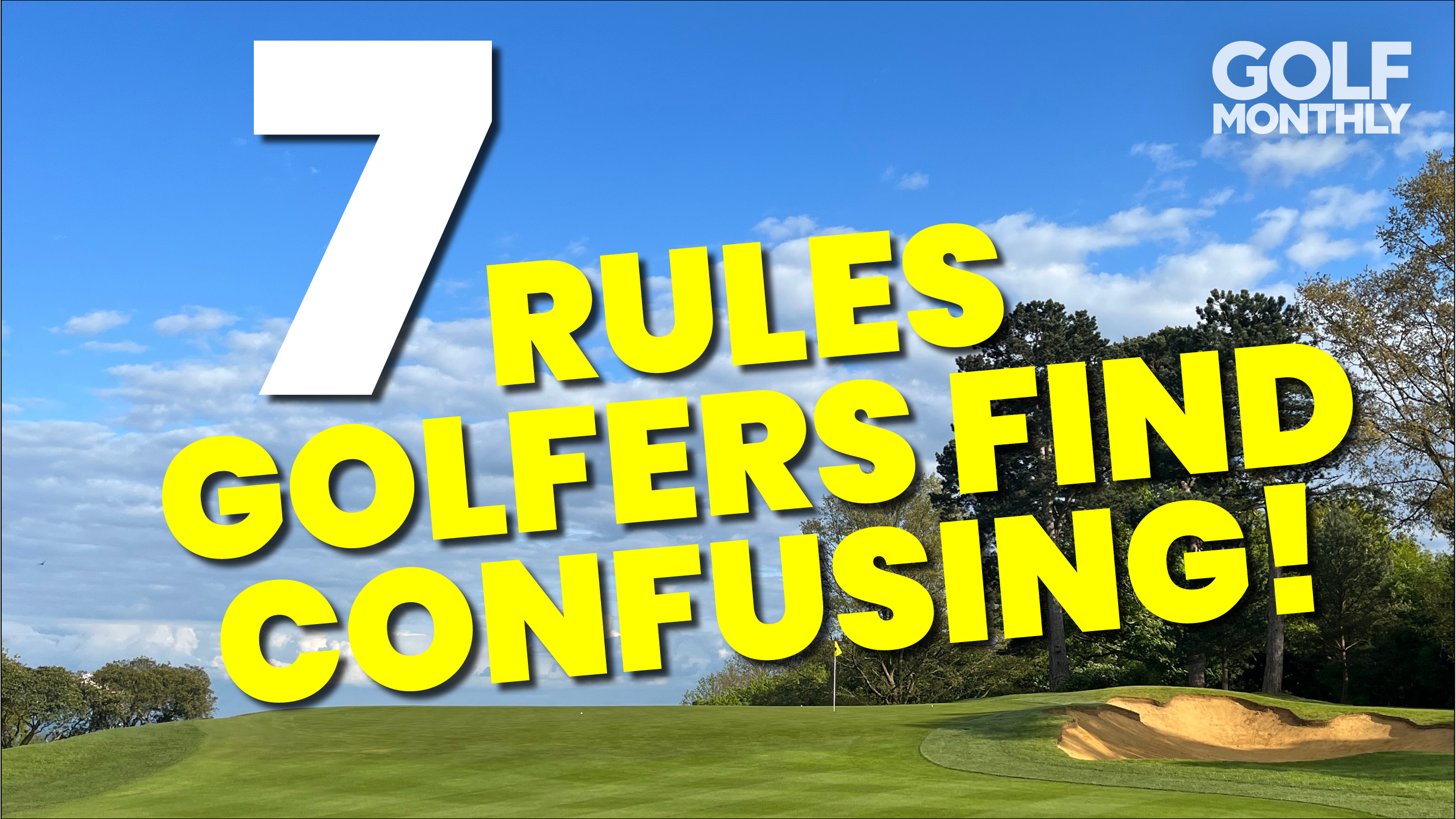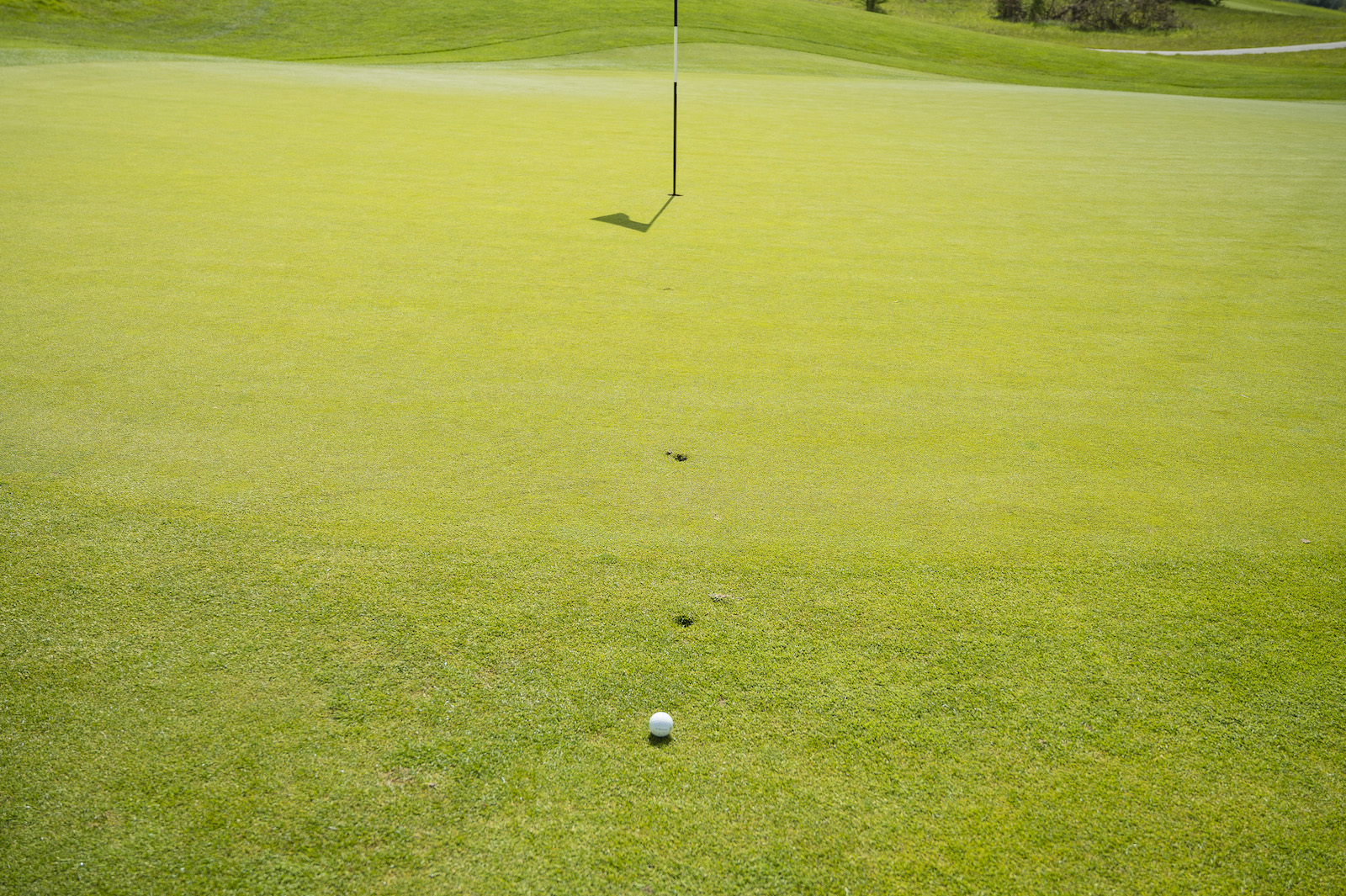7 Rules (Even Experienced) Golfers Find Confusing!
The Rules of Golf may have been simplified in 2019, but there are certain Rules that some golfers still find confusing...


Despite the major revisions to the Rules that came into effect in 2019, there’s no doubt that many golfers still find certain elements a little confusing - some Rules more than others.
The Golf Monthly Rules query Inbox is testament to this, so in this article and accompanying video below, we pick out seven Rules, definitions or scenarios - including the ones we get asked about most frequently - where there is the potential for confusion, misunderstanding or misinterpretation, …
Is there a penalty for accidental movement of my ball?
It’s important to remember that the default position under Rule 9.4b is that there is still a penalty if you move your ball, whether accidental or not. The confusion has probably arisen following a couple of Exceptions that came in via the 2019 Rules revisions in which you are no longer penalised for accidental movement of your ball when searching for it or on the putting green. But elsewhere, there is still a one-stroke penalty if you accidentally nudge it with your club or drop something on it, for example, causing it to move. We get lots of emails about this from readers who perhaps know about those new Exceptions and then read too much into them.

There is still a penalty in the general area if you move your own ball even by accident
But if you cause your ball to move in the general area, a bunker or a penalty area, you still get a one-stroke penalty and must replace the ball in its original spot before playing on. If you fail to replace the ball before playing, the penalty escalates to the general penalty for playing from a wrong place.
What does ‘known or virtually certain’ mean?
This phrase 'known or virtually certain' crops up a number of times in the Rules whether to do with determining if your ball is in a penalty area, whether or not it moved or what caused it to move. While ‘known’ is fairly self-explanatory, what does ‘virtually certain’ mean? We cover this in the video attached to this article.
‘Known’ means there is conclusive evidence that your ball did go into a penalty area, for example, perhaps because you saw a splash, or another player saw it go in and tells you it did. ‘Virtually certain’ means that all available information points to it being in the penalty area, but there is a very small degree of doubt about it - perhaps there’s a small patch of rough where it could also conceivably be.
This Definition of this phrase in the Rules says that it must be at least 95% likely that the ball did end up in the penalty area in the above example. Obviously, there is a judgement call to be made here, but it does mean that if there is a large area of thick rough before the penalty area where the ball could also be, you can't just assume it’s in the penalty area if no-one saw for sure where it finished or witnessed a splash. In such circumstances, it would be very hard to argue virtual (or 95%) certainty.
Subscribe to the Golf Monthly newsletter to stay up to date with all the latest tour news, equipment news, reviews, head-to-heads and buyer’s guides from our team of experienced experts.
Where is my ‘nearest point of complete relief’?
There is still confusion about nearest point of complete relief from an abnormal course condition (animal hole, ground under repair, immovable obstruction or temporary water), wrong green or No Play Zone.
The problem is either that people don’t really understand the concept and/or they forget what it is they’re getting relief from. It’s often been said that people interpret ‘nearest’ as ‘nicest’ in the hope or belief that they’re entitled to a decent lie. But they are only getting relief from a specific thing such as a cart path (immovable obstruction) and the nearest point of complete relief is at the nearest point to where the ball is lying on the path, whether that’s fairway, semi-rough, thick rough, a bush or whatever. There is no free relief from any of these parts of the general area under the Rules - all you are getting relief from is the cart path.

There is only ever one nearest point of complete relief and it won't always be as nice as it is here
If you don’t fancy where you would have to drop as a result, you can always opt to play it as it lies or take one of the unplayable ball relief options under penalty. But what you can’t do is twist ‘nearest’ into ‘nicest' point of complete relief! Worth saying, the example in this video illustrates the point clearly.
Can I practise at all during a round?
Many golfers, erring on the side of caution, think that nothing is permitted in the way of practice during a competition round. But between holes, you may practise your chipping and putting on or near the putting green last played or the next teeing area (no bunker shots though) as long as you don’t unduly delay play. So, you can quickly have another go at that putt you just missed or chip you just fluffed if no-one is waiting to play in.

There is a limited amount of practice you can do during a round if you're not unduly delaying play
But if you practise in a way or a place not permitted, you get the general penalty under Rule 5.5, which is applied to the next hole if it takes place between the playing of two holes.
Can I repair a pitchmark on my line if I’m off the green?
Pitchmarks on your line when you wish to putt from the fringe are a nuisance, but before you automatically reach for the pitchmark repairer, is the pitchmark on the putting green or the fringe?

Can you repair both, neither or just one of these pitchmarks?
If it's the former, you may repair it even if your ball is not on the putting green. If it’s the latter, you can’t touch it and will have to either take your chances putting through it or reach for a more lofted club.
If you do repair a pitchmark on your line off the green, you will incur the general penalty under Rule 8.1a for improving the conditions affecting your stroke by altering the surface of the ground.
However, in the rare event that the pitchmark was created after your ball came to rest (e.g., it was made by a subsequent shot from another player), you would then be allowed to repair it as you are entitled to restore conditions worsened by another player, an animal or an artificial object after your ball has come to rest under Rule 8.1d.
Can I not even putt from a wrong green?
Any green other than the putting green on the hole you are playing is classed as a wrong green and you must (not may!) take relief under Rule 13.1f. This applies not only if your ball is lying on the wrong green, but also if you would be standing on it to play or it would interfere with your area of intended swing (e.g., your club might strike the green on your follow-through).
Most importantly, don’t be tempted to play from another green very close by (perhaps on a links course where greens can often lie close to each other), even if they’re practically side by side, with just a strip of eminently puttable fringe between them. The Rules make no differentiation between what type of club or shot you’re intending to play. You must take relief, and failure to do so will result in the general penalty for playing from a wrong place in breach of Rule 13.1f.
Can I take stroke and distance if I overhit a putt?
This is definitely a slightly unusual one that will undoubtedly raise a few eyebrows should you decide to do it, but you are permitted to take stroke and distance relief for a stroke played from the putting green just as you are elsewhere on the course – regardless of whether or not that would mean playing from nearer to the hole than where your ball has come to rest.
Yes, it’s a rare scenario but if you putt into a lake or a horrible lie in a bunker, or send it trundling 80 yards back down the fairway (occasionally possible depending on the topography), you would be perfectly within your rights to play the putt again from the same spot under penalty of one stroke rather than playing or dropping from where your ball has come to rest.
It may sound unlikely, but there are holes and courses where it could just be one to remember if a putt goes off in your hands and you catch a slope that sends it off the green into some undesirable spot!

Jeremy Ellwood has worked in the golf industry since 1993 and for Golf Monthly since 2002 when he started out as equipment editor. He is now a freelance journalist writing mainly for Golf Monthly. He is an expert on the Rules of Golf having qualified through an R&A course to become a golf referee. He is a senior panelist for Golf Monthly's Top 100 UK & Ireland Course Rankings and has played all of the Top 100 plus 91 of the Next 100, making him well-qualified when it comes to assessing and comparing our premier golf courses. He has now played 1,000 golf courses worldwide in 35 countries, from the humblest of nine-holers in the Scottish Highlands to the very grandest of international golf resorts. He reached the 1,000 mark on his 60th birthday in October 2023 on Vale do Lobo's Ocean course. Put him on a links course anywhere and he will be blissfully content.
Jezz can be contacted via Twitter - @JezzEllwoodGolf
Jeremy is currently playing...
Driver: Ping G425 LST 10.5˚ (draw setting), Mitsubishi Tensei AV Orange 55 S shaft
3 wood: Srixon ZX, EvenFlow Riptide 6.0 S 50g shaft
Hybrid: Ping G425 17˚, Mitsubishi Tensei CK Pro Orange 80 S shaft
Irons 3- to 8-iron: Ping i525, True Temper Dynamic Gold 105 R300 shafts
Irons 9-iron and PW: Honma TWorld TW747Vx, Nippon NS Pro regular shaft
Wedges: Ping Glide 4.0 50˚ and 54˚, 12˚ bounce, True Temper Dynamic Gold 105 R300 shafts
Putter: Kramski HPP 325
Ball: Any premium ball I can find in a charity shop or similar (or out on the course!)